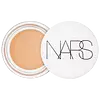What's inside
What's inside
 Key Ingredients
Key Ingredients

 Benefits
Benefits

 Concerns
Concerns

No concerns
 Ingredients Side-by-side
Ingredients Side-by-side

Polyglyceryl-2 Triisostearate
EmulsifyingOctyldodecanol
EmollientKaolin
AbrasivePolybutene
Mica
Cosmetic ColorantPolyethylene
AbrasiveCaprylic/Capric Triglyceride
MaskingBidens Pilosa Extract
HumectantIsopropyl Titanium Triisostearate
EmollientStearalkonium Hectorite
Gel FormingPropylene Carbonate
SolventAstrocaryum Murumuru Seed Butter
EmollientGossypium Herbaceum Seed Oil
Skin ConditioningLinum Usitatissimum Seed Oil
PerfumingTocopherol
AntioxidantTrihydroxystearin
Skin ConditioningEthylhexyl Palmitate
EmollientSilica Dimethyl Silylate
EmollientButylene Glycol
HumectantSodium Hyaluronate
HumectantCaprylyl Glycol
EmollientHexylene Glycol
EmulsifyingTocopheryl Acetate
AntioxidantLecithin
EmollientPhenoxyethanol
PreservativeCI 77163
Cosmetic ColorantIron Oxides
CI 77891
Cosmetic ColorantPolyglyceryl-2 Triisostearate, Octyldodecanol, Kaolin, Polybutene, Mica, Polyethylene, Caprylic/Capric Triglyceride, Bidens Pilosa Extract, Isopropyl Titanium Triisostearate, Stearalkonium Hectorite, Propylene Carbonate, Astrocaryum Murumuru Seed Butter, Gossypium Herbaceum Seed Oil, Linum Usitatissimum Seed Oil, Tocopherol, Trihydroxystearin, Ethylhexyl Palmitate, Silica Dimethyl Silylate, Butylene Glycol, Sodium Hyaluronate, Caprylyl Glycol, Hexylene Glycol, Tocopheryl Acetate, Lecithin, Phenoxyethanol, CI 77163, Iron Oxides, CI 77891
Glyceryl Triacetyl Ricinoleate
EmollientOctyldodecanol
EmollientBis-Diglyceryl Polyacyladipate-2
EmollientOzokerite
Emulsion StabilisingKaolin
AbrasivePolyethylene
AbrasiveCI 77120
Cosmetic ColorantCalcium Aluminum Borosilicate
Caprylic/Capric Triglyceride
MaskingTocopheryl Acetate
AntioxidantSalicornia Herbacea Extract
Skin ConditioningCommiphora Mukul Resin Extract
Skin ConditioningCoffea Arabica Seed Oil
MaskingLecithin
EmollientBHT
AntioxidantPhenoxyethanol
PreservativeCI 77891
Cosmetic ColorantCI 77491
Cosmetic ColorantCI 77492
Cosmetic ColorantCI 77499
Cosmetic ColorantCI 77163
Cosmetic ColorantGlyceryl Triacetyl Ricinoleate, Octyldodecanol, Bis-Diglyceryl Polyacyladipate-2, Ozokerite, Kaolin, Polyethylene, CI 77120, Calcium Aluminum Borosilicate, Caprylic/Capric Triglyceride, Tocopheryl Acetate, Salicornia Herbacea Extract, Commiphora Mukul Resin Extract, Coffea Arabica Seed Oil, Lecithin, BHT, Phenoxyethanol, CI 77891, CI 77491, CI 77492, CI 77499, CI 77163
Ingredients Explained
These ingredients are found in both products.
Ingredients higher up in an ingredient list are typically present in a larger amount.
This ingredient is an emollient, solvent, and texture enhancer. It is considered a skin-softener by helping the skin prevent moisture loss.
It helps thicken a product's formula and makes it easier to spread by dissolving clumping compounds.
Caprylic Triglyceride is made by combining glycerin with coconut oil, forming a clear liquid.
While there is an assumption Caprylic Triglyceride can clog pores due to it being derived from coconut oil, there is no research supporting this.
Learn more about Caprylic/Capric TriglycerideThis synthetic powder is used to add a pearly/white color in cosmetics.
Ci 77891 is a white pigment from Titanium dioxide. It is naturally found in minerals such as rutile and ilmenite.
It's main function is to add a white color to cosmetics. It can also be mixed with other colors to create different shades.
Ci 77891 is commonly found in sunscreens due to its ability to block UV rays.
Learn more about CI 77891Kaolin is a clay. It is used for oil control and to help minimize pores. Like other clays, kaolin has the ability to absorb excess sebum or oil. This can help clean out pores and mattify the skin.
Some types of kaolin may have exfoliating properties. When water is added to kaolin, it becomes a paste with small abrasive particles.
Most kaolin is a white color, but may be pink/orange/red depending on where it comes from.
The name 'kaolin' comes from a Chinese village named 'Gaoling'. Kaolin clay comes from rocks rich in kaolinite. Kaolinite, the mineral, has a silicate layered structure. Kaolinite is formed from chemical weathering of aluminum siilicate minerals.
Besides skincare, kaolin is commonly used to make glossy paper, in ceramics, toothpaste, and as medicine to soothe stomach issues.
Learn more about KaolinLecithin is a term for a group of substances found in the cell membranes of plants, animals, and humans. They are made up of mixture of phospholipids.
This ingredient has emollient and emulsifying properties.
As an emollient, lecithen helps soften the skin and creates a barrier to keep moisture in.
As an emulsifier, it also helps prevent water and oil ingredients from separating. Lecithin can also help ingredients be better absorbed by the skin.
This is because the phospholipids in lecithin produce liposomes. Liposomes help other ingredients get through the skin barrier.
Depending on the source of this ingredient, lecithin may not be fungal acne safe. This is because some sources of lecithin come from soybean oil, which may feed the malassezia yeast that feeds fungal acne.
We recommend reaching out to the brand you are purchasing from to inquire about the source of their lecithin.
Some other names for this ingredient include soy lecithin and deoiled soy lecithin.
Learn more about LecithinOctyldodecanol is a fatty alcohol. It is primarily used to enhance the texture of products.
As an emulsifier, Octyldodecanol helps prevent the oils and waters from separating. It also prevents ingredients from creating foam when shaken.
Octyldodecanol is created by reducing fatty acid to an alcohol.
Due to its high molecular weight, it does not get absorbed into the skin.
Learn more about OctyldodecanolPhenoxyethanol is a preservative that has germicide, antimicrobial, and aromatic properties. Studies show that phenoxyethanol can prevent microbial growth. By itself, it has a scent that is similar to that of a rose.
It's often used in formulations along with Caprylyl Glycol to preserve the shelf life of products.
Polyethylene is a synthetic ingredient that helps the skin retain moisture. It is a polymer.
It is also typically used within product formulations to help bind solid ingredients together and thicken oil-based ingredients. When added to balms and emulsions, it helps increase the melting point temperature.
Tocopheryl Acetate is AKA Vitamin E. It is an antioxidant and protects your skin from free radicals. Free radicals damage the skin by breaking down collagen.
One study found using Tocopheryl Acetate with Vitamin C decreased the number of sunburned cells.
Tocopheryl Acetate is commonly found in both skincare and dietary supplements.
Learn more about Tocopheryl Acetate